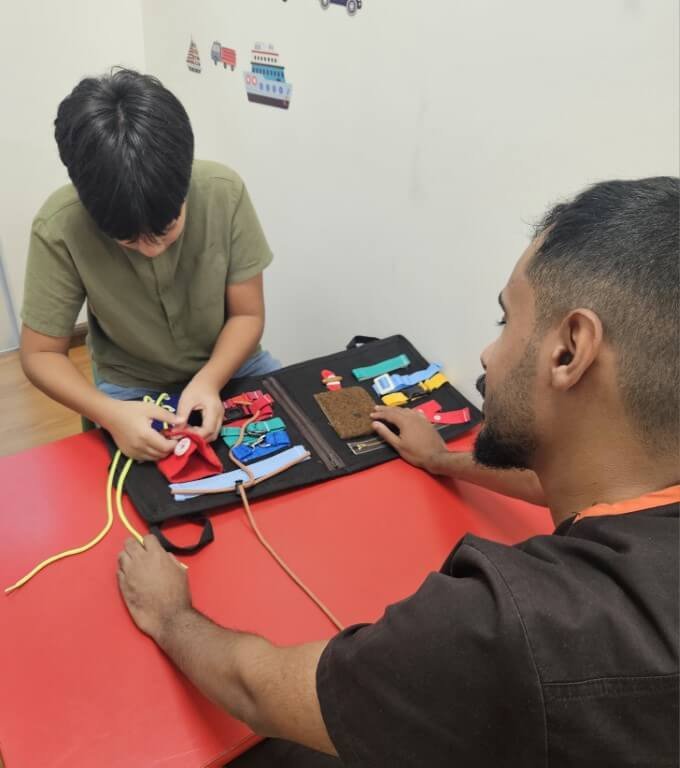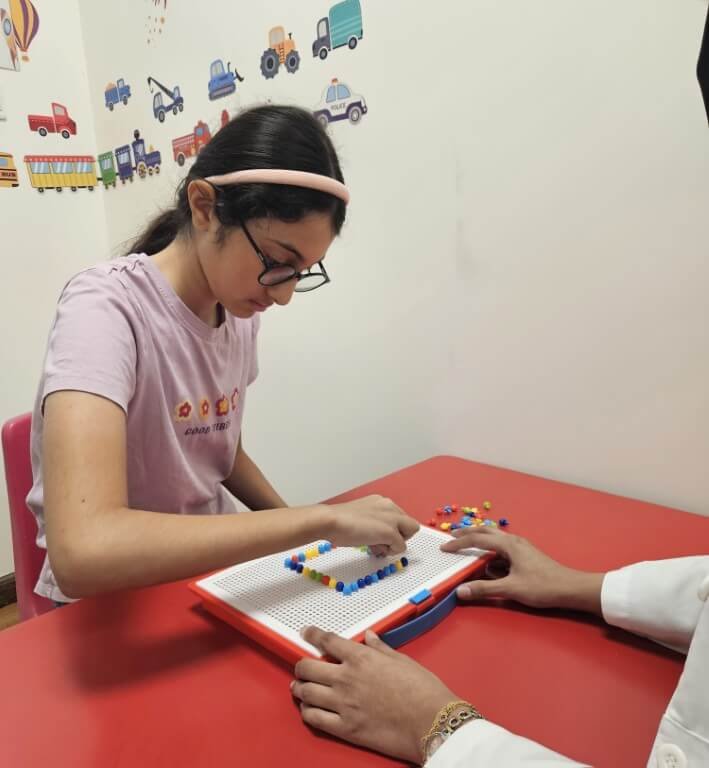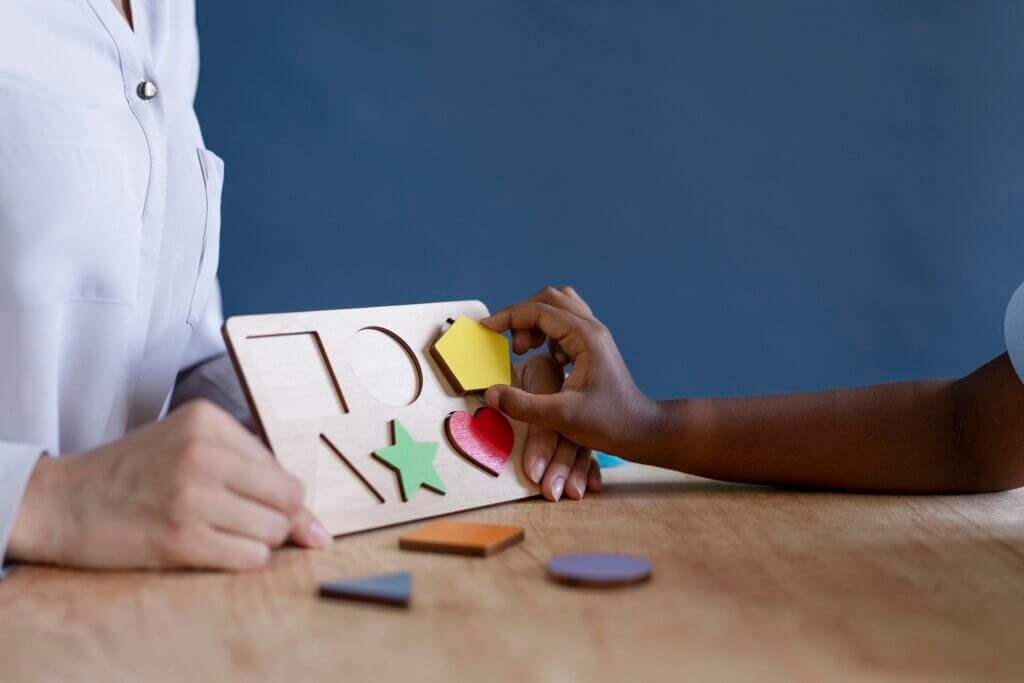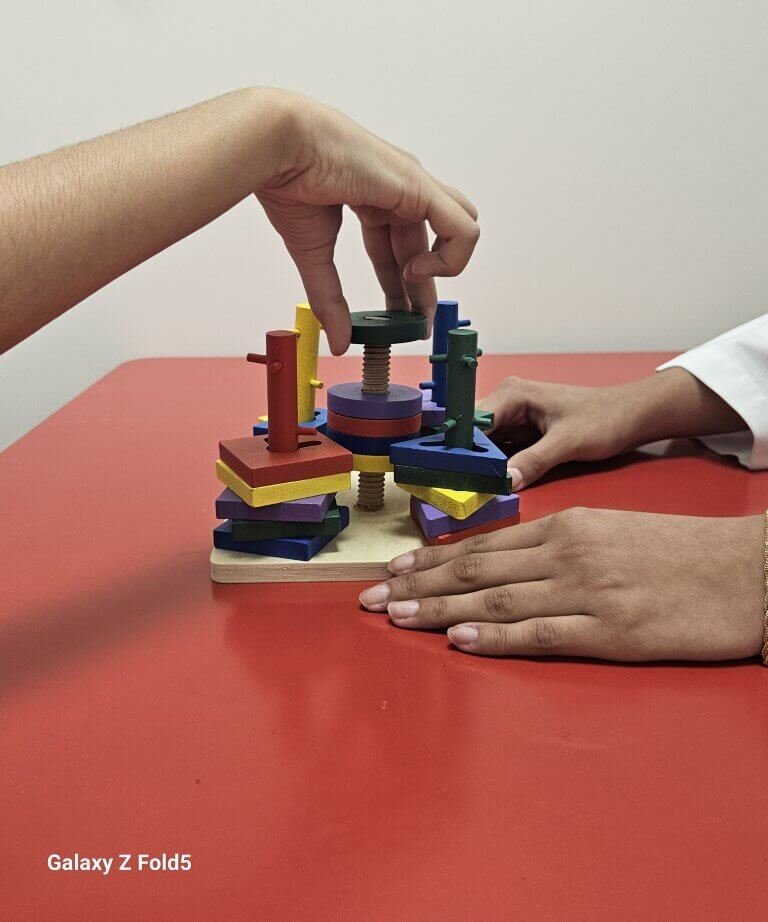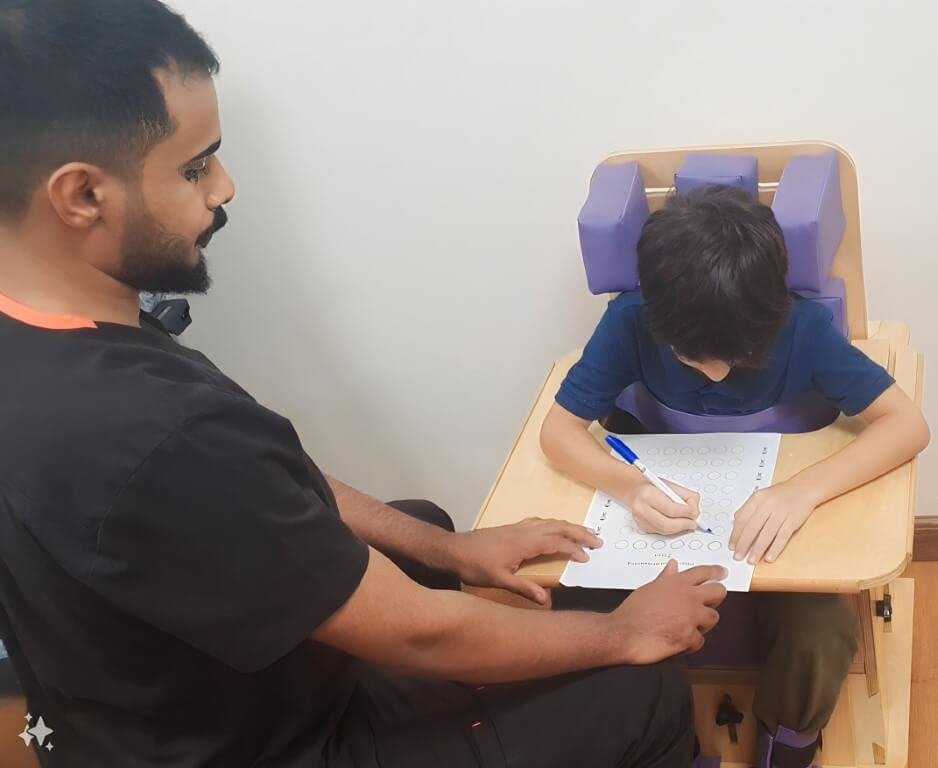The main goal of the occupational therapy program for children with autism is to develop the individual's personal, social, and professional independence and integrate him into his community by enhancing his participation in daily life activities such as: eating, dressing, playing, learning, entertainment, work, and social participation. The goals of the intervention are determined according to the needs and priorities of the individual based on his environment, abilities, and age.

- Assessment: Case assessment is the cornerstone of building an intervention program. This involves gathering information in collaboration with the child’s family to assess the child’s daily functioning and participation in different contexts.
- Develop an individual treatment plan: Every child is different, so the treatment plan will vary for each case based on the evaluation results and specific goals.
- Fun Therapy Activities: The occupational therapist uses a variety of fun activities to make therapy sessions fun and encourage the child's participation.
- Collaborating with the care team: The occupational therapist works with teachers and specialists to ensure a supportive environment.
- Parent Training: Parents are trained on how to implement treatment strategies at home to promote the child's continued development.
Occupational therapy interventions for children with autism
After gathering information, the occupational therapist develops a treatment program based on the assessment results and includes strategies to enhance the child's ability to participate in daily activities.





